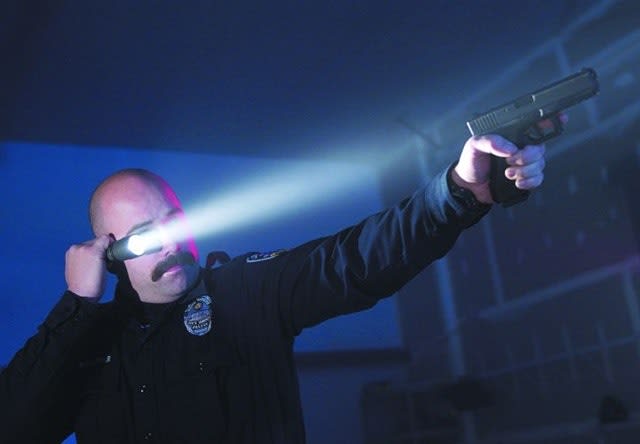Holsters for handguns with attached lights have become widely available. As a result, more and more professionals are opting for a gun-mounted light.
The SureFire X300 weapon light fits both handguns and long guns and generates 170 lumens of white light focused by a Total Internal Reflection (TIR) lens. Features include a rail-lock system with adapters for attachment and detachment for Universal and Picatinny rails. An ambidextrous push/toggle switch provides one-finger operation for either momentary or constant-on operation.
The TLR-2S tactical light from Streamlight can be used on a long gun with an optional mount. Featuring the latest C4 LED technology, the TLR-2S delivers up to 160 lumens of white light and offers high-intensity, low-intensity, and strobe settings. Power is supplied by two lithium CR123A batteries with a runtime of 2.5 hours on maximum output and 50 hours on the lowest setting.
A gun-mounted light may be a great aid to shooting in the dark, but it comes with liability issues as well. It's next to impossible to manage a hand-held light and a long gun at the same time. All my tactical shotguns and black rifles have dedicated lights on them, because we must positively identify our target before pulling the trigger.
"The gun-mounted light enhances an officer's ability to identify and engage a target if the officer has justification to have their gun drawn in the first place," said John Meyer of TeamOne Network.












